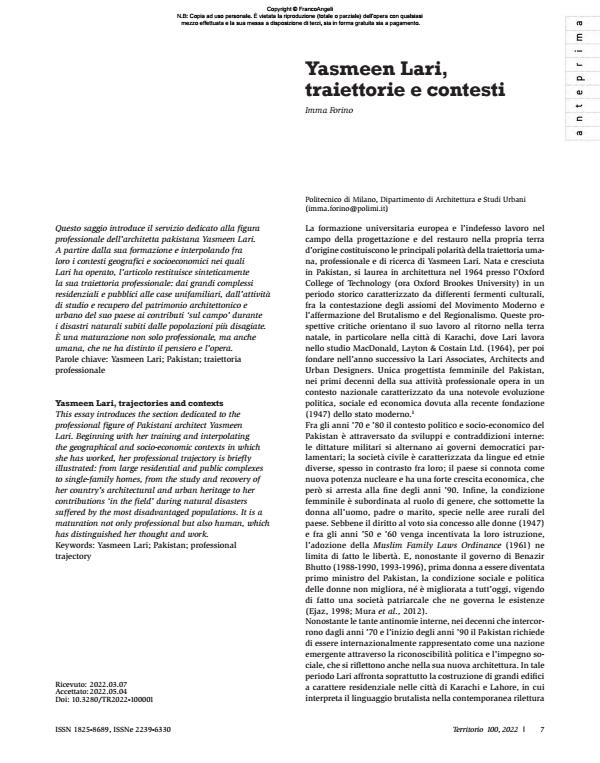Yasmeen Lari, trajectories and contexts
Journal title TERRITORIO
Author/s Imma Forino
Publishing Year 2022 Issue 2022/100
Language Italian Pages 10 P. 7-16 File size 628 KB
DOI 10.3280/TR2022-100001
DOI is like a bar code for intellectual property: to have more infomation
click here
Below, you can see the article first page
If you want to buy this article in PDF format, you can do it, following the instructions to buy download credits

FrancoAngeli is member of Publishers International Linking Association, Inc (PILA), a not-for-profit association which run the CrossRef service enabling links to and from online scholarly content.
This essay introduces the section dedicated to the professional figure of Pakistani architect Yasmeen Lari. Beginning with her training and interpolating the geographical and socio-economic contexts in which she has worked, her professional trajectory is briefly illustrated: from large residential and public complexes to single-family homes, from the study and recovery of her country’s architectural and urban heritage to her contributions ‘in the field’ during natural disasters suffered by the most disadvantaged populations. It is a maturation not only professional but also human, which has distinguished her thought and work.
Keywords: Yasmeen Lari; Pakistan; professional trajectory
Imma Forino, Yasmeen Lari, traiettorie e contesti in "TERRITORIO" 100/2022, pp 7-16, DOI: 10.3280/TR2022-100001